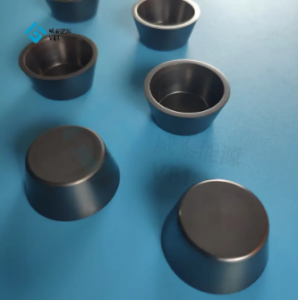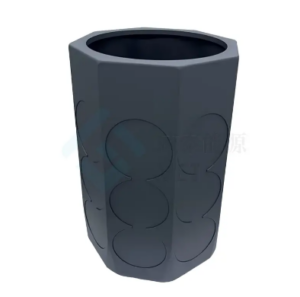レーザーのエッチングは金属のフィルムの磁気ディスクの開発で重要な役割を担います。 この精密な技術は金属表面に厳密な設計を、これらのディスクの機能性そして信頼性を高めます刻みます。 レーザーエッチングによるエラー規格の確立により、一貫したデータの整合性と性能を保証します。 エラー規格は、データストレージにおいて重要な重要性を保ち、ディスクレパンシスを最小限に抑え、保存された情報の精度を高めます。 堅牢な実装により エッチングディスク プロセス、業界は、データストレージソリューションにおいて、より高い精度と信頼性を実現できます.

要点
- レーザーのエッチングは金属のフィルムの磁気ディスクの精密そして正確さを高め、高いデータ完全性および信頼性を保障します.
- レーザーエッチングによる堅牢なエラー基準を実装することで、より一貫性のある信頼性の高いデータストレージソリューションにつながる、矛盾を最小限に抑えます.
- 金属フィルムの耐久性と滑らかな表面は、磁気ディスクの性能を最適化し、レーザーエッチングのための理想的な基質になります.
- レーザーエッチング技術への投資は、誤差率を削減し、データストレージソリューションの寿命を延ばすことにより、長期的なコスト削減につながることができます.
- レーザーエッチングは、データストレージ機能だけでなく、高度なセキュリティ機能や様々な業界のカスタムソリューションなどの新しいアプリケーションを開きます.
- レーザーエッチング技術に関連した技術的課題やスケーラビリティの問題を克服するために研究開発を進めることは不可欠です.
- 新興技術でレーザーエッチングを統合することで、データストレージのイノベーションを促進し、よりスマートで効率的なシステムを構築することができます.
エッチングディスクプロセスの理解
レーザーエッチングのプロセス
レーザーのエッチングの仕事
レーザーのエッチングは材料を取除き、精密なパターンを作成するために金属表面に軽い焦点を合わせることを含みます。 このプロセスは、金属を蒸発させるためにレーザーの高いエネルギーに依存し、清潔で詳細なエッチングを残します。 レーザーの強度および速度はさまざまな適用のための多目的な用具を作る異なった深さおよび質を達成するために調節することができます。 これらの変数を制御することによって、技術者はそれを保障できます エッチングディスク プロセスは特定の設計条件を満たします.
使用される装置および技術
レーザーエッチングで使用される装置は金属表面のために特に有効である繊維レーザーの彫刻機を含んでいます。 これらの機械は高精度を提供し、磁気ディスクで使用されるそれらを含むさまざまな金属のタイプと、働くことができます。 高度なソフトウェアは、レーザーの動きを制御し、複雑な設計と一貫した結果を可能にします。 また、技術は、オペレータを保護し、エッチング材料の完全性を確保するための安全機能も含まれています。 装置と技術のこの組み合わせにより、エッチングディスクの効率的かつ正確な生産が可能になります.
金属のフィルムの磁気ディスクの適用
なぜ金属のフィルムは適しています
メタルフィルムは、耐久性と高温に耐える能力のために、レーザーエッチングのための理想的な基質として機能します。 金属のフィルムの滑らかな表面はデータ記憶の間違いの標準を開発するために重要な精密エッチングを可能にします。 また、金属フィルムの磁気特性により、データの完全性や信頼性がパラマウントされる磁気ディスクの使用に適しています。 レーザーエッチングによる金属膜の互換性は、ディスクの全体的な品質と性能を向上させます.
磁気ディスクのための特定の技術
磁気ディスクのコンテキストでは、特定のエッチング技術が採用され、データストレージの機能を最適化します。 これらの技術は、ディスクの磁気特性を高めるパターンを作成するために、レーザーのパラメータを調整することを含みます。 これにより、メーカーは、データを正確に保存および取得するディスクの能力を向上させることができます。 ザ・オブ・ザ・ エッチングディスク プロセスには、各ディスクが必要なエラー基準を満たしていることを確認する品質管理対策も含まれています。 優れた性能と信頼性を提供する磁気ディスクのこの細心のアプローチ結果.
エラー標準開発のためのレーザーエッチングの利点
精度と精度
レーザーエッチングは、誤差基準の発生時に精度と精度を大幅に向上させます。 このプロセスは、それぞれが エッチングディスク 高いデータの完全性を維持します。 テクニシャンは、保存されたデータの正確さを維持するのに役立ちます金属フィルム磁気ディスク上の正確なパターンを作成するためにレーザーエッチングを使用します。 レーザーのエッチングの精密は矛盾を最小にし、データが時間通りに一貫し、信頼できることを保障します.
データ整合性の強化
データの整合性は、あらゆるデータ記憶ソリューションの重要な側面です。 レーザーエッチングは、高精度で複雑なデザインを彫刻する方法を提供することでこれに貢献します。 この精度は、磁気ディスクに保存されたデータがそのままで、未処理であることを保証します。 データの検索中にエラーが発生する可能性を減らすことで、レーザーエッチングは情報の完全性を維持する上で重要な役割を果たします.
エラー率の低減
データの保存の誤り率は、データの損失や破損を含む重要な問題につながる可能性があります。 レーザーエッチングは、ディスクに高精度で一貫したパターンを作成することで、これらの誤差率を削減します。 これにより、ディスクが最適に実行され、データアクセス時のエラーの可能性が低下します。 その結果、業界はより信頼性の高いデータストレージソリューションの恩恵を受けています.
費用対効果
レーザーエッチングだけでなく、精度を向上させるだけでなく、エラー規格を開発するための費用対効果の高いソリューションを提供しています。 レーザーエッチング技術の初期投資は大きく見えるかもしれませんが、生産における長期節約と効率性は価値のある投資になります.
長期貯蓄
時間が経つにつれて、レーザーエッチングされたディスクの精度と信頼性は重要なコスト削減をもたらします。 エラー率を削減すると、データの回復とメンテナンスに費やしたリソースが少ないことを意味します。 また、レーザーエッチングパターンの耐久性により、ディスクの寿命が長いため、コスト削減に貢献します.
生産効率
生産工程におけるレーザーエッチングの効率は、過小評価できません。 この技術は、エッチングされたディスクの迅速かつ正確な生産を可能にし、時間と労力を削減します。 高品質のディスクを迅速に生産する能力は、データストレージソリューションに焦点を当てた業界のための貴重なツールをエッチングするレーザーを作る、全体的な生産効率を高めます.
課題と限界
技術的な課題
現在の技術の限界
現在のレーザーのエッチングの技術は複数の限界に直面します。 要求される精密エッチングディスク プロセスは一貫した結果を提供しないかもしれない高度装置を、要求します。 テクニシャンは、多くの場合、エッチングの品質に影響を与えるレーザー校正の問題に遭遇します。 また、その技術は、特定の金属タイプに苦労し、その応用範囲を制限します。 これらの制限は、レーザーエッチングシステムの機能を強化するために、継続的な研究開発が必要です.
ディスクへの損傷の可能性
精密な間、レーザーのエッチングはディスクを傷つける危険を運びます。 高強度レーザーは、金属フィルムでマイクロひびや歪みを引き起こす可能性があります。 そのような損傷は、ディスクの構造的整合性とデータ記憶容量を妥協します。 製造業者は、これらのリスクを軽減するために厳格な品質管理措置を実施しなければなりません。 レーザー機器の定期的なメンテナンスと校正は、エッチングプロセス中に潜在的な損傷を防ぐ上で重要な役割を果たします.
経済・実用的考察
初期投資コスト
レーザーエッチング技術の初期投資は重要な経済課題を提示します。 高品質のレーザーシステムと関連機器は、大幅な資本準備が必要です。 企業は、改善されたデータストレージソリューションの長期的利益に対して、これらのコストを削減しなければなりません。 高水準のコストにもかかわらず、多くの産業は長期節約および高められた製品品質の可能性を認識し、投資を正当化します.
スケーラビリティの問題
拡張性は、レーザーエッチングアプリケーションに実用的な関心を残します。 エッチングされたディスクの需要が高まるにつれて、メーカーは効率的に作業をスケールする必要があります。 しかし、レーザーエッチングプロセスの複雑さは、急激なスケーリングを妨げる可能性があります。 企業は成長する生産の要求を満たすために付加的な装置および巧みな人員に投資する必要があります。 スケーラビリティの問題に対処するには、テクノロジーと労働力開発の両方で戦略的な計画と投資が必要です.
業界への影響
データストレージソリューションへの影響
貯蔵容量の進歩
レーザーのエッチングの技術はデータ記憶解決の記憶容量をかなり高めます。 金属のフィルムの磁気ディスクの精密で、複雑なパターンを作成することによって、製造業者はデータ記憶のためのディスクの表面区域を最大限に活用できます。 この最適化により、各ディスクに保存されるデータが増え、全体的なストレージ容量を効果的に増加させることができます。 その結果、業界は大きく、より効率的なデータストレージソリューションの需要が高まっています。 ザ・オブ・ザ・ エッチングディスク プロセスは、これらの進歩を達成する上で重要な役割を果たし、各ディスクが完全性を損なうことなく最大データを格納できることを確認します.
信頼性と性能の向上
データの保存ソリューションの信頼性と性能は、レーザーエッチングによるマーク付き改良です。 この技術は、各ディスクが高精度と精度を維持し、データの検索中にエラーの可能性を減らします。 強化された信頼性は、データの損失が少なく、性能が向上し、一貫性のある正確なデータアクセスに依存する業界にとって不可欠です。 レーザーエッチングを採用することにより、メーカーは、優れた性能を提供するディスクを生成し、現代のデータストレージアプリケーションの厳しい要求を満たすことができます.
未来のトレンドとイノベーション
新しいアプリケーションの可能性
レーザーエッチングは、従来のデータストレージを超えて新しいアプリケーションの可能性を開きます。 インダストリーズは、ユニークな識別子や偽造防止策など、ディスクの高度なセキュリティ機能を作成する際に使用しています。 これらのアプリケーションは、データストレージソリューションのセキュリティと信頼性を高め、消費者に付加価値を提供できます。 さらに、レーザーエッチングの精度は、特定の業界のニーズに合わせたカスタムソリューションの開発を可能にし、さまざまな分野での革新的なアプリケーションのための方法を残すことができます.
Integration with Emerging Technologies
新興技術を用いたレーザーエッチングの統合により、業界に刺激的な機会を提示します。 人工知能やモノのインターネットなどの技術が進化し続けています。信頼性が高く効率的なデータストレージソリューションが求められます。 レーザーエッチングは、高度なデータ処理とストレージ要件をサポートする高精度ディスクを提供することで、これらの技術を補完することができます。 この統合は、よりスマートで効率的なデータストレージシステムの開発につながることができます, 業界のイノベーションと成長を駆動.
レーザーのエッチングは金属のフィルムの磁気ディスクの間違いの標準の開発を著しく進歩させます。 データの整合性やストレージの信頼性を高める技術です。 将来の開発は、アプリケーションを拡大し、革新的なソリューションのための新興技術と潜在的に統合することができます。 継続的な研究開発と革新が重要である。 業界は、競争上の優位性を維持するためにレーザーエッチング技術に投資しなければなりません。 そのためには、データストレージソリューションが進化する要求と技術の進歩を満たしていることを確認することができます.
よくあるご質問
レーザーエッチングとは?
レーザーのエッチングは金属表面に設計を刻むために光の集中されたビームを使用する精密な技術です。 この方法は、金属フィルム磁気ディスクの機能性と信頼性を高める、詳細なパターンを作成するために材料を削除します.
レーザーのエッチングはデータ記憶を改善する方法か?
レーザーエッチングは、金属フィルムの磁気ディスクに精密で複雑なパターンを作成することにより、データストレージを向上させます。 これらのパターンは、ディスクの磁気特性を高め、ストレージ容量の増加とデータの完全性の改善につながる.
磁気ディスクで使用される金属フィルムはなぜですか?
金属フィルムは、その耐久性と高温に耐える能力のために磁気ディスクで使用されます。 その滑らかな表面はデータ記憶の間違いの標準を開発するために重要な精密エッチングを可能にします.
エラー標準開発のためのレーザーエッチングを使用する利点は何ですか?
レーザーのエッチングは高められた精密および正確さ、減らされた間違い率および費用効果が大きいことを含む間違いの標準開発のための複数の利点を提供します。 これらの利点はより信頼できる、有効なデータ記憶解決に導きます.
レーザーエッチングはどのような課題に直面していますか?
レーザーエッチングは、現在の技術の制限、ディスクへの潜在的な損傷、高い初期投資コスト、およびスケーラビリティの問題などの課題に直面しています。 これらの課題に対処するには、継続的な研究開発が必要です.
レーザーエッチングは、データストレージ業界にどのように影響しますか?
レーザーエッチングは、ストレージ容量の高度化と信頼性と性能の向上により、データストレージ業界に影響を与えます。 効率的なデータストレージソリューションの需要が高まる高品質のディスクの生産を可能にします.
レーザーエッチングは、データストレージを超えてアプリケーションに使用できますか?
はい、レーザーのエッチングはデータ記憶を越えて適用に使用することができます。 インダストリーズは、ユニークな識別子や偽造防止策など、ディスクの高度なセキュリティ機能を作成する際に使用しています.
レーザーのエッチングで使用される装置は何ですか?
繊維レーザーの彫刻家はレーザーのエッチングで一般的です。 これらの機械は高精度を提供し、磁気ディスクで使用されるそれらを含むさまざまな金属のタイプと、働くことができます。 高度なソフトウェアは、レーザーの動きを一貫した結果に制御します.
レーザーエッチングは、新興技術とどのように統合しますか?
レーザーエッチングは、高度なデータ処理とストレージ要件をサポートする高精度ディスクを提供することで、新興技術と統合します。 この統合は、よりスマートで効率的なデータストレージシステムの開発につながることができます.
レーザーエッチングで未来のトレンドは?
レーザーのエッチングの将来の傾向は、新しいアプリケーション、新興技術との統合、および精密および効率の継続的な進歩を含むかもしれません。 これらのトレンドは、データストレージ業界におけるイノベーションと成長を推進します.







